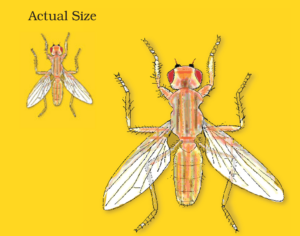Dung, Black & Cluster Flies

Flies are an unwelcome nuisance for many people and animals, but understanding their habits and life cycles can make managing these pests more effective. Here, we break down the specifics of dung flies, black flies, and cluster flies, along with actionable tips to control or minimize their impact. Follow these tips to reduce pest fly populations.
Dung Flies (Scathophaga stercoraria)
What Are Dung Flies?
Dung flies are small to medium-sized insects commonly found around cow, horse, pig, and sheep manure. Among these, the yellow dung fly stands out due to its bright yellow, hairy body and bee-like appearance.
Life Cycle and Behavior
Larvae: Dung fly larvae feed on decaying organic material, such as dung and rotting plant matter.
Adults: Interestingly, adult dung flies are predatory, feeding on other insects drawn to manure.
Habitat: These flies are typically found in pastures, stables, and along shorelines where decaying vegetation is present.
Why Are Dung Flies Considered Beneficial?
Dung flies play an important role in breaking down manure and reducing other fly populations by preying on them. Although they may seem like a nuisance, they rarely bother humans or animals and are generally considered beneficial insects for pest control.
Black Flies (Simulium spp.)
What Are Black Flies?
Black flies are small, gnat-like insects with short legs and a distinctive humpbacked appearance. Though only about 1/8 inch long, their impact can be disproportionately large.
Life Cycle and Habitat
Breeding: Black flies thrive in clean, fast-moving rivers and streams where their larvae develop as semi-aquatic insects.
Adults: Adult female black flies feed on blood, targeting humans, livestock, and wildlife.
Common Issues Caused by Black Flies
Black flies attack in large numbers, particularly during spring and early summer. Their painful bites can cause swelling and irritation, and black flies may transmit diseases – especially to livestock.
Control Tips for Black Flies
Stay away from infested areas during peak feeding times, typically in early mornings and evenings.
Spray insect repellents on animals, avoiding areas where Fly Predators are active.
Wear light-colored clothing (black flies are more attracted to dark clothing).
Masks, fly boots, fly sheets, and repellents designed for animals can provide temporary relief.
Controlling black flies is challenging, but some communities manage them by treating breeding sites in rivers with larvicides.
Cluster Flies (Pollenia rudis)
What Are Cluster Flies?
Cluster flies resemble house flies but are slightly larger (3/8 to 1/2 inch) and have a yellowish sheen on their thorax. They are most bothersome when they invade homes in the fall and spring.
Life Cycle and Behavior
Larvae: Cluster fly larvae parasitize earthworms, making them a unique species among flies.
Adults: Adults emerge in late summer and early fall, seeking warmth and shelter for the winter. They enter homes and other structures through small cracks and openings.
Why Are Cluster Flies a Problem?
In fall, cluster flies invade homes to hibernate, often gathering in large numbers near windows, attics, or other high places. They reemerge in spring, seeking an exit and becoming a nuisance indoors.
Unlike house flies, cluster flies are not a health risk as they do not breed indoors or contaminate food.
Control Tips for Cluster Flies
Use caulk or weather stripping to seal cracks and crevices in walls, windows, and doors. Cluster flies can crawl through small gaps in walls, so sealing is key.
The most effective way to remove cluster flies indoors is by vacuuming them up.
Exterior sprays in late summer may reduce the number of flies entering your home. Consult a pest control professional for safe application.

DUNG FLY
Beneficial predator; larvae feed on manure and decaying plants.

BLACK FLY
Blood-feeding pests; active near rivers and streams.

CLUSTER FLY
Invade homes for warmth in fall and emerge in spring.
Whether you’re dealing with nuisance flies in your home or protecting livestock from biting pests, understanding the habits of dung, black, and cluster flies can make all the difference. While dung flies are helpful allies, black flies and cluster flies require targeted prevention and control.
For personalized pest management recommendations or effective fly control products, contact us today!
Why Choose Spalding Labs for Fly Control?
Spalding Labs offers proven, science-backed solutions like Fly Predators to control house flies naturally and effectively. With over 45 years of experience, we’re trusted by horse and livestock owners across the country to keep fly populations in check.
Ready to stop house flies before they start?
Contact Our Team
Reach out with questions or for a free consultation: 1-888-880-1579

